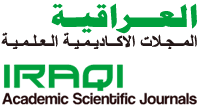Economic Growth Triangles and Their in Economic Integration (Iraq – Jordan – Saudi Arabia)
Abstract
This study shows that industrial development is one of the most important pillars of economic development in any country of the world because of the integrated service it provides to all sectors in the integration group, and that economic integration can reach the maximum degree of integration in the case of applying triangles of integration of growth between a group, countries or regions.
Accordingly, it is possible to study the triangles of economic integration between the most important Arab countries in the Arab East region in terms of location, resource, factories and global transport, namely (Iraq, Jordan and Saudi Arabia); In economic and agricultural activity and the diversity of its natural resources, such as oil, gas and others, which give economic value to the state, and to be the first in the amount of crude oil reserves.
We find that Jordan, with its excellent climate, encouraged the development of agriculture, especially the Mediterranean climate, which made it characterized by the cultivation of certain crops, such as fruit and olive trees, as well as crops that enter industries as a raw material.
Studying the economies of these three countries in terms of astronomical location, and the geographical location of each country, as well as the primary resources possessed by each country involved in industry, trade, and small and large factories in each of these three countries, and the year 2015 was chosen to compare the economies of these countries, and the establishment of the economic growth triangle that works to advance the three countries with a better reality, and keep pace with the developed countries of the world


